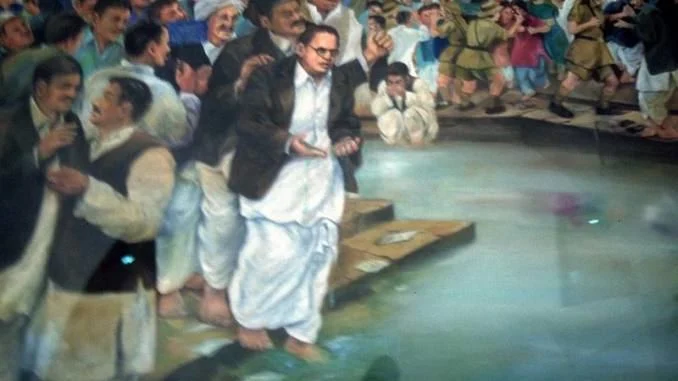In the annals of Indian history, Mahad Satyagraha stands as a testament to the unwavering spirit of resistance against oppression and discrimination. Led by the visionary Dr. B. R. Ambedkar, this momentous event reverberated across the nation, leaving an indelible mark on the struggle for social justice and equality.
The Genesis of Mahad Satyagraha

Mahad Satyagraha unfolded in 1927 in the quaint town of Mahad, Maharashtra, amidst the backdrop of pervasive caste-based discrimination prevalent in Indian society. Dr. Ambedkar, a staunch advocate for the rights of the oppressed Dalit community, spearheaded this historic movement to challenge the age-old practice of untouchability.
Dr. B. R. Ambedkar: The Architect of Change

At the helm of Mahad Satyagraha stood Dr. B. R. Ambedkar, a towering figure in Indian politics and social reform. His relentless pursuit of justice and equality propelled him to the forefront of the Dalit emancipation movement, earning him the title of “Father of the Indian Constitution.”
The Battle for Social Equality
Mahad Satyagraha was not merely a protest; it was a symbolic assertion of Dalit rights and dignity. Thousands of Dalits, defying societal norms and prejudices, gathered at the Chowdar Tank in Mahad to assert their right to access public water sources—a privilege denied to them solely based on their caste.
Triumphs and Tribulations

The Mahad Satyagraha witnessed both moments of triumph and tribulation. The historic burning of the Manusmriti, a symbol of caste-based discrimination, symbolized the dawn of a new era of equality. However, the journey towards social justice was fraught with challenges, as entrenched caste hierarchies resisted change at every turn.
Legacy and Impact
The legacy of Mahad Satyagraha transcends the boundaries of time and space. It inspired subsequent generations to continue the fight against caste-based discrimination and paved the way for significant legislative reforms, including the abolition of untouchability in independent India.
Reviving the Spirit of Mahad
In contemporary India, the spirit of Mahad Satyagraha remains as relevant as ever. It serves as a reminder of the ongoing struggle for social justice and the imperative to uphold the principles of equality and inclusion in all spheres of life.
Conclusion: Upholding the Legacy
As we reflect on the significance of Mahad Satyagraha, let us reaffirm our commitment to the ideals of justice, equality, and fraternity. By honoring the legacy of Dr. B. R. Ambedkar and the brave souls who participated in this historic movement, we take a step closer toword building a more just and equitable society for all.